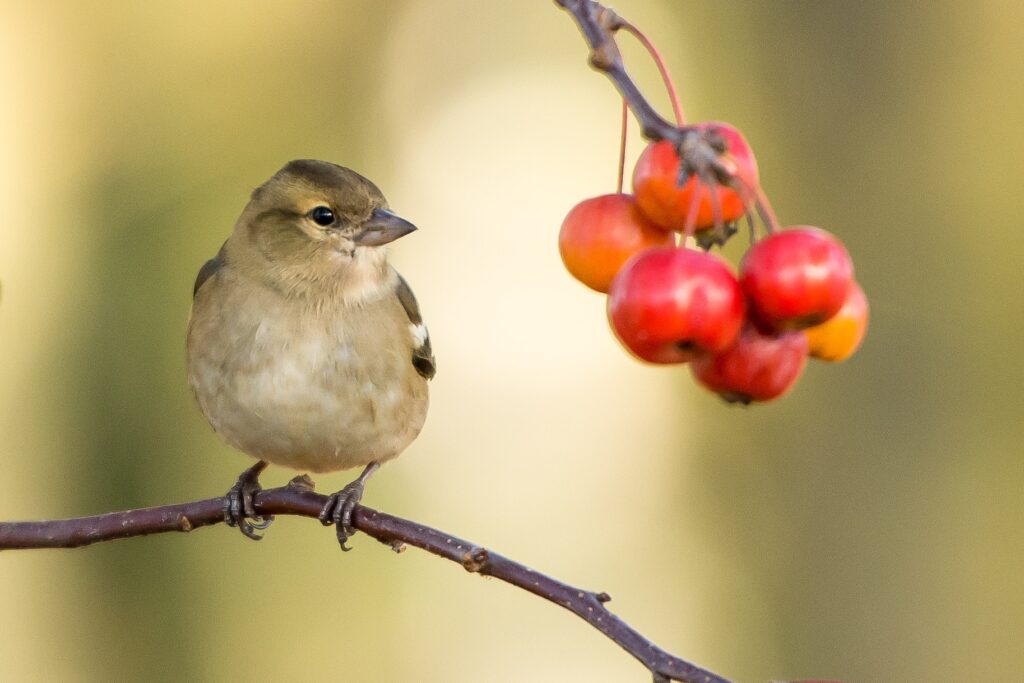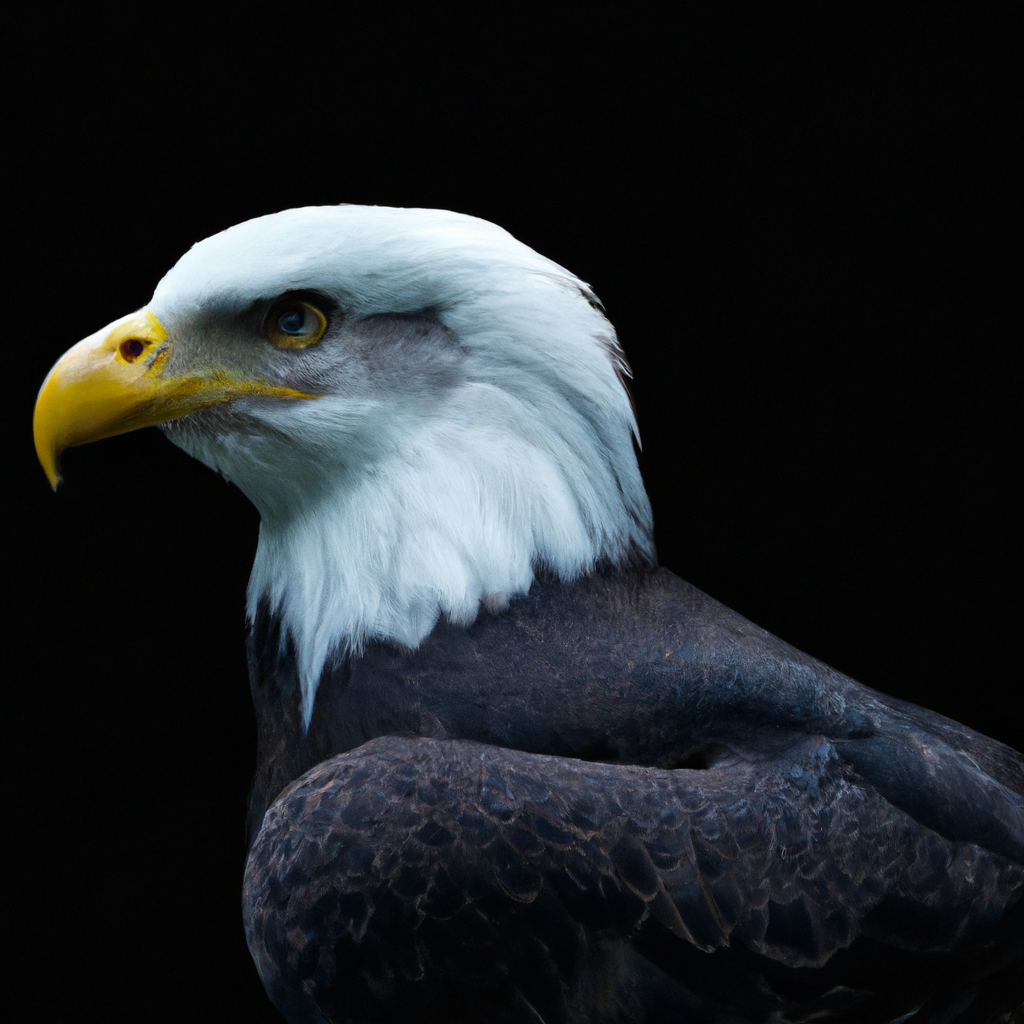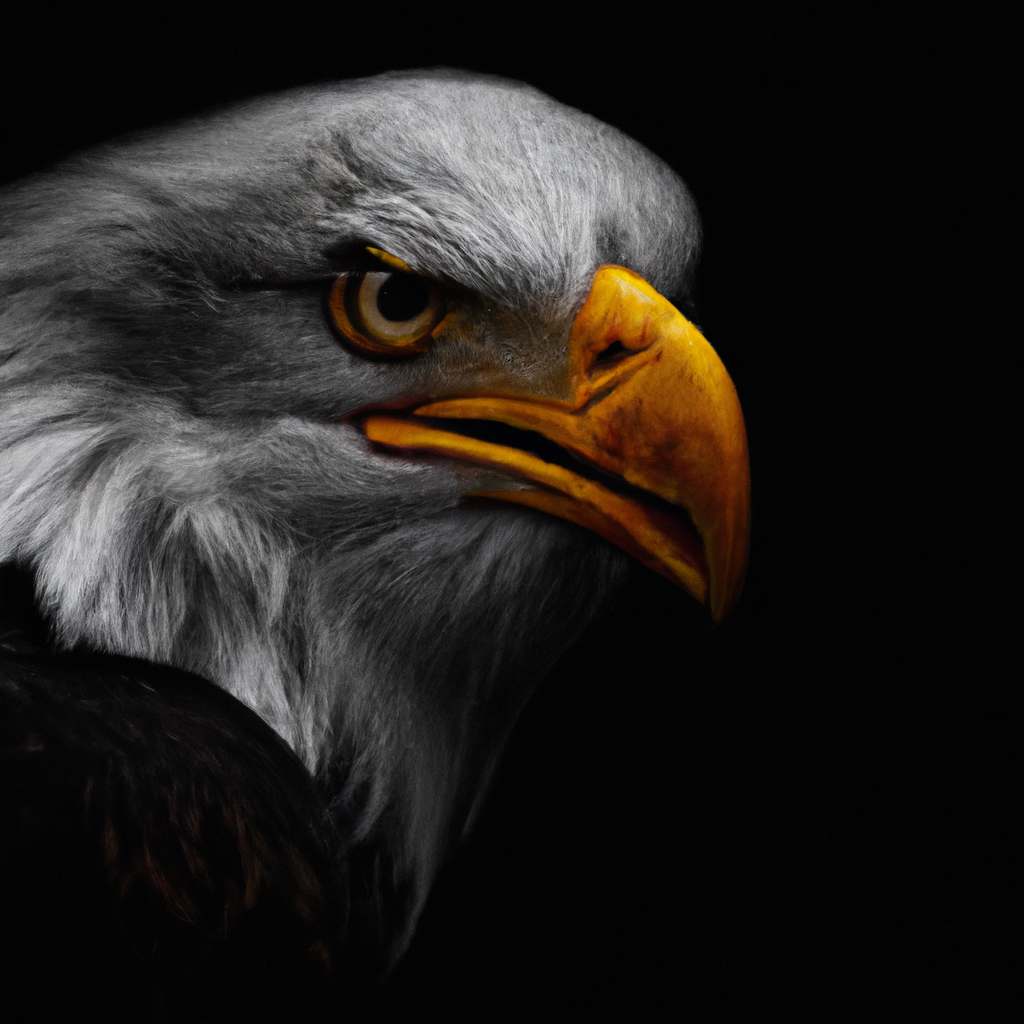In the world of majestic birds, few are as iconic as the Bald Eagle. Known scientifically as Haliaeetus Leucocephalus, this remarkable species soars gracefully across the skies, captivating both nature enthusiasts and casual observers alike. With its striking white head and tail contrasting against its dark brown body, the Bald Eagle stands as a symbol of strength and freedom. Delving into the characteristics, habitat, and conservation efforts of this magnificent creature, this article aims to shed light on the captivating world of the Bald Eagle.

This image is property of images.unsplash.com.
1. Description
The Bald Eagle is a majestic bird of prey with distinctive physical characteristics that set it apart from other species.
1.1 Physical Characteristics
The Bald Eagle is known for its iconic white head and tail feathers, which contrast with its dark brown body. Adult Bald Eagles can reach a wingspan of up to 7 feet, making them one of the largest birds in North America. Their sharp, hooked beak is perfectly adapted for tearing into prey, while their powerful yellow talons provide a strong grip.
1.2 Size and Weight
On average, adult Bald Eagles measure around 30-40 inches in length and weigh between 6-14 pounds. Females are typically larger than males, with a length of 35-37 inches compared to 30-34 inches for males.
1.3 Plumage
The plumage of a Bald Eagle changes as it matures. Juvenile Bald Eagles have primarily brown plumage, which gradually transitions into the classic adult coloring as they reach sexual maturity at around 4-5 years of age. During their first few years of life, juveniles can often be mistaken for other large birds, such as Golden Eagles.
2. Distribution and Habitat
2.1 North American Range
The Bald Eagle is primarily found in North America, with the largest population residing in the United States and Canada. They can be observed throughout the continental United States, excluding a few states in the Great Plains region, and can also be spotted in parts of Alaska and Canada.
2.2 Preferred Habitat
Bald Eagles are typically found near large bodies of water, such as lakes, rivers, and coastal areas. They prefer habitats with an abundance of both water and trees, as these provide suitable nesting and hunting grounds. Forested areas near water sources are particularly attractive to Bald Eagles, as they offer both shelter and a diverse range of prey species.
2.3 Nesting Sites
Bald Eagles build large nests, known as eyries, typically located in tall trees near bodies of water. These nests are primarily made of sticks, and they can reach impressive sizes, often becoming large enough to require structural support from the tree they are built upon. Bald Eagles often return to the same nest year after year, adding to it and expanding its size over time.
3. Behavior and Adaptations
3.1 Hunting and Feeding
Bald Eagles are opportunistic hunters with a varied diet. They primarily feed on fish, swooping down from the sky to snatch their prey from the water’s surface. Their sharp eyesight allows them to spot fish swimming near the water’s surface, even from great heights. However, Bald Eagles are also known to feed on small mammals, birds, and carrion when available.
3.2 Flight and Soaring
Bald Eagles are skilled flyers, using both flapping and soaring techniques. They are capable of reaching speeds of up to 40 miles per hour when flying horizontally, and even faster when diving for prey. Their broad wings and long tail feathers provide excellent maneuverability and stability in flight. They also utilize thermals, or warm air currents, to soar effortlessly for extended periods, conserving energy during long-distance flights.
3.3 Reproduction and Parental Care
Bald Eagles form strong pair bonds and mate for life. Breeding pairs engage in an elaborate courtship display, which includes aerial acrobatics and calling to each other. Once a suitable nesting site is chosen, the female lays 1-3 eggs, which are incubated by both parents. After approximately 35 days, the eggs hatch, and the parents take turns caring for the chicks, providing them with food and protecting them from predators.
4. Diet
4.1 Primary Prey
Bald Eagles are primarily piscivorous, meaning they feed mainly on fish. Their diet includes a wide range of fish species, such as salmon, trout, and catfish. They have a unique hunting strategy, known as plunge diving, where they dive from impressive heights and snatch fish from the water’s surface with their talons. This technique allows them to catch fish that are usually too fast for other predators to catch.
4.2 Scavenging Behaviors
While fish are the preferred prey, Bald Eagles are opportunistic feeders and are not above scavenging. They will feed on carrion, such as dead animals found near water bodies or roadkill. By taking advantage of these easily accessible food sources, Bald Eagles can supplement their diet and conserve energy that would otherwise be spent on hunting.
4.3 Fishing Techniques
Bald Eagles have developed various fishing techniques to catch their preferred prey. Apart from plunge diving, they also employ a sit-and-wait method, perching near the water’s edge and patiently waiting for fish to come close enough to snatch. They are also known to engage in kleptoparasitism, where they steal fish caught by other birds, such as Ospreys, through aggressive mid-air maneuvers.

This image is property of images.unsplash.com.
5. Threats and Conservation
5.1 Historical Decline
The Bald Eagle has faced significant declines in population numbers throughout history due to various human activities. Hunting, habitat destruction, and the use of pesticides, such as DDT, contributed to the decline of Bald Eagle populations, particularly in the mid-20th century. As a result, the Bald Eagle became an endangered species and faced the threat of extinction.
5.2 Current Threats
While the Bald Eagle has made a remarkable recovery, it still faces ongoing threats that require attention for its long-term conservation. Loss of habitat due to human activities, such as deforestation and urbanization, remains a significant concern. Additionally, pollution and contaminants in water bodies can affect the health and reproduction of Bald Eagles, as they consume fish contaminated with harmful substances.
5.3 Conservation Efforts
Conservation efforts have played a crucial role in the recovery of the Bald Eagle. The banning of DDT and other harmful pesticides, coupled with habitat protection and restoration measures, have helped the population rebound. The Bald Eagle is now protected under the Bald and Golden Eagle Protection Act and the Migratory Bird Treaty Act in the United States, ensuring legal protection and continued monitoring of their populations.
6. Bald Eagle and Human Interaction
6.1 Cultural Significance
The Bald Eagle holds significant cultural significance in many indigenous cultures and is often regarded as a sacred and powerful symbol. In the United States, the Bald Eagle is the national bird and symbolizes strength, freedom, and resilience. Its image is commonly used on coins, postage stamps, and government seals, representing the nation’s values.
6.2 Protected Status
The Bald Eagle is protected by various laws and regulations to ensure its conservation and survival. Killing or harming a Bald Eagle, or even possessing its feathers or parts, is illegal in the United States without appropriate permits. These protections extend to both the birds themselves and their habitats, preserving their ecological roles and promoting their recovery.
6.3 Environmental Impact
The Bald Eagle plays an important role in its ecosystem, primarily through its hunting and feeding behaviors. By regulating fish populations, Bald Eagles help maintain healthy aquatic ecosystems. As opportunistic scavengers, they also serve as nature’s cleanup crew by consuming carrion, limiting the spread of disease in their environment. The presence of Bald Eagles can also indicate overall ecosystem health and water quality, as their decline or absence may signal environmental degradation.

This image is property of images.unsplash.com.
7. Relationship with Other Species
7.1 Predator-Prey Interactions
Bald Eagles are top predators in their ecosystems and have minimal natural predators themselves. However, Bald Eagle chicks and eggs may fall prey to larger predators, such as Great Horned Owls or raccoons. Bald Eagles also compete with other avian predators, such as Ospreys, for food and nesting sites, leading to occasional territorial disputes and interactions.
7.2 Competition for Resources
Bald Eagles compete with other predators, particularly fish-eating birds, for limited food resources. This competition is most notable with Ospreys, as both species rely heavily on fish as their primary prey. While Bald Eagles may engage in kleptoparasitism, stealing fish caught by Ospreys, they also scavenge on food leftovers and utilize different hunting techniques to reduce direct competition.
7.3 Role in Ecosystem
Bald Eagles play a critical role in their ecosystems, contributing to the balance of the food web. By preying on fish, they regulate fish populations and help control species that might otherwise become overabundant. Their feeding and scavenging behaviors also help recycle nutrients within the ecosystem, benefiting other organisms and supporting the overall health and equilibrium of their habitats.
8. Symbolism and Significance
8.1 National Symbol
The Bald Eagle holds an iconic status as a national symbol of the United States. Its regal appearance, strength, and soaring flight embody the ideals and values of the American nation. Depicted on the Great Seal of the United States and the national flag, the Bald Eagle represents freedom, independence, and the country’s commitment to environmental conservation.
8.2 Native American Beliefs
Many Native American tribes hold the Bald Eagle in high regard, associating it with spiritual significance and cultural traditions. It is often seen as a symbol of power, vision, and divine connection. Indigenous peoples have deep respect for the Bald Eagle’s strength and hunting abilities, considering it a messenger between the human and spirit worlds.
8.3 Modern Interpretations
In modern society, the Bald Eagle is often celebrated as a symbol of environmental conservation and wildlife protection. Its recovery from the brink of extinction serves as a testament to the effectiveness of conservation efforts. The image of the Bald Eagle is commonly used by organizations and individuals as a rallying symbol for environmental causes, promoting awareness and appreciation for the natural world.

9. Famous Bald Eagles
9.1 Challenger
Challenger is a famous Bald Eagle known for his appearances at various public events and sports games across the United States. He became an ambassador for wildlife conservation, captivating audiences with his impressive flights during the national anthem or halftime shows. Challenger’s presence has helped raise awareness about the importance of protecting and preserving habitats for Bald Eagles and other wildlife.
9.2 Mr. President
Mr. President is an iconic Bald Eagle affiliated with the American Eagle Foundation. He gained recognition through his appearances at educational programs and patriotic events, helping educate the public about the conservation of Bald Eagles and the protection of their habitats. Through his interactions with humans, Mr. President has fostered a deeper appreciation and understanding of these magnificent birds.
9.3 Washington Post Eagle
A Bald Eagle named Washington Post Eagle earned fame after being rescued and rehabilitated by The Washington Post newspaper. Found in 2016 with an injured wing, the bird was nursed back to health and subsequently released into the wild. The journey of the Washington Post Eagle captured the hearts of readers and highlighted the importance of supporting wildlife rehabilitation initiatives.
10. Thriving Populations and Recovery
10.1 Population Growth
Thanks to dedicated conservation efforts, the Bald Eagle population has shown remarkable growth in recent years. From the brink of extinction in the mid-20th century, the species has rebounded significantly. The population is now estimated to be over 70,000 individuals in the United States and Canada combined, with populations continuing to increase in various regions.
10.2 Success Stories
Specific regions have witnessed notable success in the recovery of Bald Eagle populations. For example, the Chesapeake Bay area in the eastern United States has experienced a remarkable resurgence, with Bald Eagles now nesting in large numbers along its shores. Efforts such as habitat preservation, environmental cleanup, and public awareness campaigns have contributed to this success story.
10.3 Factors Driving Recovery
Several key factors have fueled the recovery of the Bald Eagle. The banning of DDT, which caused reproductive issues in eagles, has played a crucial role. Additionally, the protection of nesting sites, habitat restoration, and the conservation of prey species have supported the population’s recovery. Public awareness and education programs have also been instrumental in garnering support for Bald Eagle conservation efforts.
In conclusion, the Bald Eagle’s physical characteristics, habitat preferences, hunting techniques, and role in ecosystems make it a remarkable and important species. Despite historical declines and ongoing threats, conservation efforts have led to the recovery of its population, showcasing the potential for successful wildlife conservation. The Bald Eagle’s cultural significance, symbolism, and famous individuals further highlight its importance as an ambassador for conservation and environmental awareness. As we continue to protect and preserve their habitats, we can ensure the continued existence and thriving populations of this iconic bird of prey.

